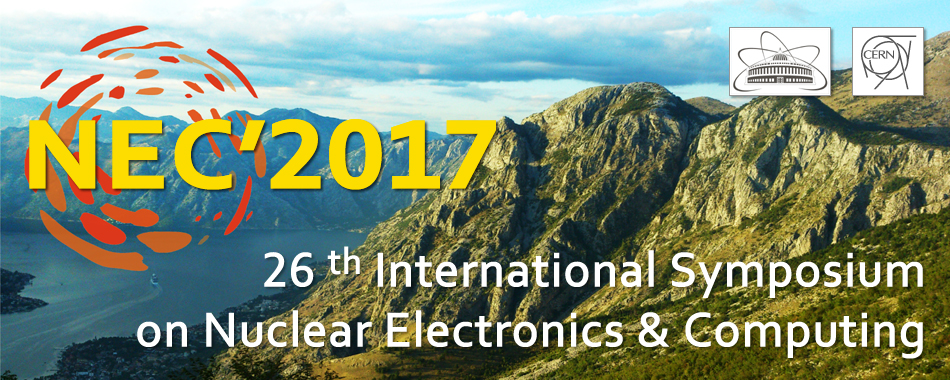Speaker
Mr
Yury Tsyganov
(JINR)
Description
Two scenarios of modifying the DGFRS (the Dubna Gas Filled Recoil Separator) spectrometer of rare alpha decays are under consideration. Both of them imply use of integral 1M CAMAC analog-to-digital processor TekhInvest ADP-16 [1,2] as a basic unit in the spectrometer design. In scenario a) special unit (PKK-05) [3] will be used to measure horizontal position of the signal, without measuring its energy, whereas in scenario b) a complete amount (12 modules ADP-16 for 48x128 strips of DSSSD) are used to measure both energy and position signals. To measure signals of charged particles coming from cyclotron an upgraded gaseous low pressure TOF-ΔE1-ΔE2 module is used. To store TOF-ΔE1-ΔE2 information specific 1M module TekhInvest PA-3n-tof is used. First results of trial runs using the specific TekhInvest IMI-2011 pulser and test nuclear reaction natYb+48CaTh* are presented. New algorithm to search for ER-α-α…α(SF) sequences in a real-time mode is discussed taking into account commissioning in the nearest future of the new FLNR DC-280 cyclotron that is to provide beams of very high intensity [4]. An equivalent circuit for two neighbor strips of p-n junction side is proposed. It predicts a small non-linear ballistic effect for signals originating in inter-strip p-n junction area. Additionally, authors define abstract mathematical objects, like correlation graph and incoming event matrixes of a different nature to construct in a simple form a rare event detection procedure in a more exhaustive relatively the present one, using real-time detection mode. In that case one can use every from n∙(n-1)/2 correlation graph edges are used as a “trigger” for beam irradiation pauses to provide a “background free” condition to search for ultra rare alpha decays. Here n is a correlation graph nodes number. Schematics of these algorithms are considered.
References
[1] Yu.S.Tsyganov //Lett. to ECHAYA, 2016. Vol.13(203) pp.898-904
[2] A.N.Kuznetsov // ADP-16 TekhInvest manual.
[3] V.G.Subbotin, A.M.Zubareva,A.A.Voinov, A.N.Zubarev, L.Schlattauer //Lett. to ECHAYA, 2016. Vol.13(203) pp.885-889
[4] G.G.Gulbekyan et al. // Project of DC-280 cyclotron Report at JINR Nucl. Phys. PAC
Author
Mr
Yury Tsyganov
(JINR)
Co-authors
Mr
Alexandr Polyakov
(JINR)
Mr
Alexey Voinov
(JINR)
Leo Schlattauer
(JINR)
Mr
Maxim Shumeiko
(FLNR,JINR)

